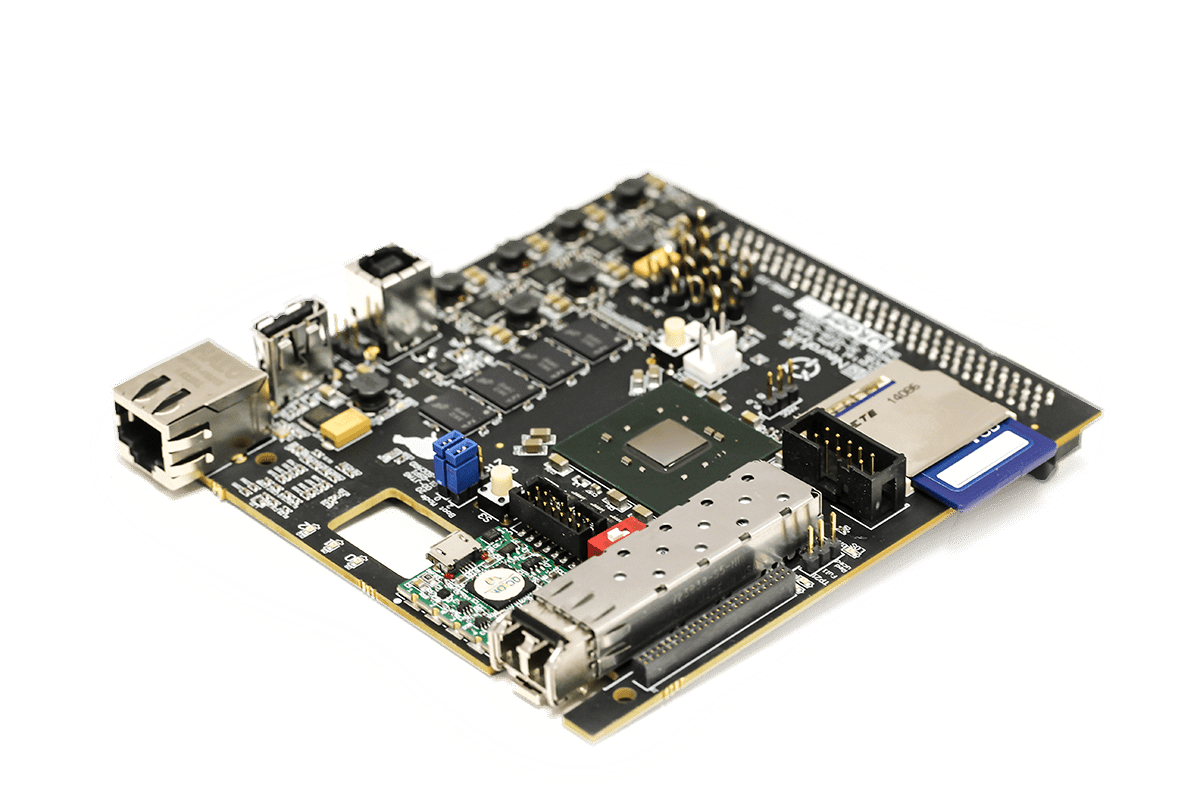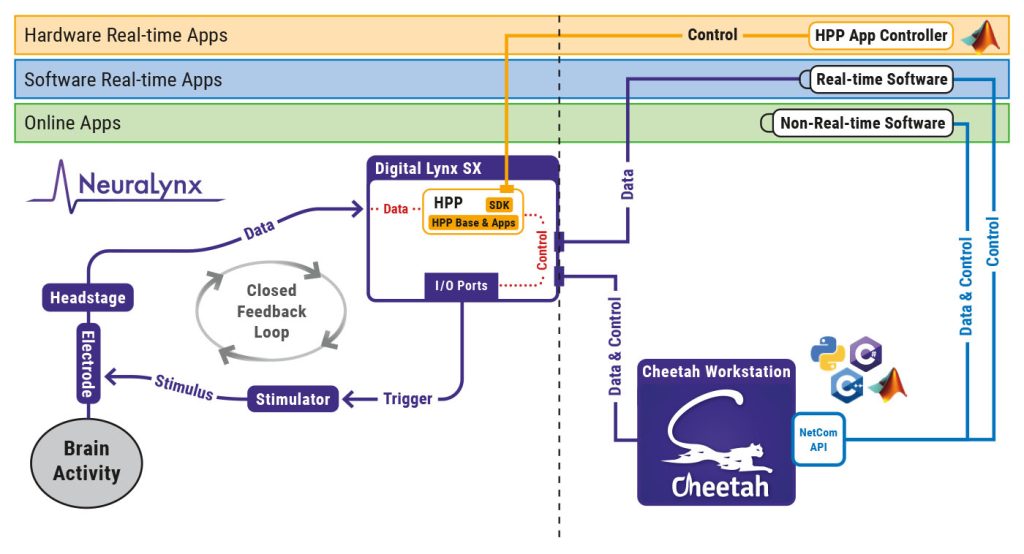Hardware Processing Platform
(HPP v1.0.0). A closed loop signal processing platform that connects directly to the Digital Lynx SX motherboard, providing real-time data analysis and response for low-latency feedback stimulation experiments.
With HPP, you can now analyze and respond to input signals in less than 1 millisecond!
HPP can execute experiment stimuli with precise control of Digital Lynx SX analog and digital outputs. HPP contains a customizable processor that communicates with the DLSX motherboard, providing low-latency access to the input acquisition data – both the analog data and the TTL I/O.
Highlights
- User-programmable; customize to any application
- Sub-millisecond latency feedback response
- Digital signal filtering and other DSP functions
- Analog signal output
- Allows combination of detect and trigger to manage complex closed loop experiments
Process data from all digital and analog Digital Lynx SX inputs, including:
- Buffered tethered headstages / Digital Lynx input boards
- FreeLynx wireless digital telemetry headstages
- Digital multiplexing (MUX) headstages
User-Programmable Applications*
- Real-time spike detection
- Neural ensemble detection and burst analysis
- Experiment control – high precision TTL pulse trains
| Programming Tools | MATLAB®, C/C++ (RTOS), VHDL (FPGA) |
| CPU | 1 GHz Dual ARM Cortex A9 |
| RAM | 1 GB DDR3 |
| Flash | 16 MB |
| Interface | SD Card |
| Connections | USB 2.0 (MATLAB Interface), Gigabit Ethernet, Serial UART, JTAG |
*Neuralynx is not a distributor of Omnetics parts.


